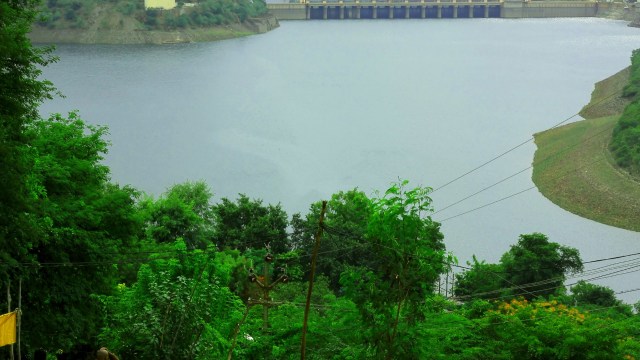Water Levels at Priyadarshini Jurala Project Reach Critical Heights
The water levels at the Priyadarshini Jurala Project have reached 317.44 meters, filling the Krishna River dam to its maximum capacity. This development has raised concerns and attention from local authorities and residents alike. With only about a meter remaining before reaching the full capacity of 318.52 meters, the situation is being closely monitored.
Located in the Jogulamba Gadwal district, the dam is currently handling a significant inflow of 124,000 cusecs from upstream rains. To manage this surge, 12 gates have been opened, allowing 86,212 cusecs of water to flow downstream through the spillway. This action is crucial in preventing overflow and ensuring the safety of the surrounding areas.
Dual Purpose: Powering Homes and Supporting Agriculture
At present, the dam serves two essential functions: generating electricity and supporting agricultural activities. The hydroelectric plant is utilizing 27,699 cusecs of water to produce power, which is particularly beneficial during the rainy season when energy demand can fluctuate.
In addition to electricity generation, the dam plays a vital role in irrigation. Water flows to fields through various channels, including the Bhima Lift-I, which pushes out 650 cusecs, and the Koilsagar Lift, which uses 315 cusecs. Both the Left Main Canal and Right Main Canal also contribute to feeding farms across the district. This steady supply of water is crucial for farmers preparing for the kharif planting season.
Benefits for Farmers and Communities
The current high water levels bring positive news for farming communities. When dams are filled to their capacity, they provide a sense of security and support for agricultural activities. Additionally, the clean hydroelectric power generated helps reduce reliance on fossil fuels like coal and gas, contributing to lower air pollution levels.
The efficient management of the dam’s water benefits everyone in the vicinity, from local farmers who depend on the water for their crops to city dwellers who rely on the electricity generated. Dams such as the Priyadarshini Jurala Project play a critical role in India’s efforts to expand its clean energy infrastructure. By capturing and reusing rainwater, these systems help reduce the environmental impact associated with burning coal and other polluting fuels.
Efficient Management and Community Safety
Local authorities have noted that the PJP Dam is managing the inflows efficiently and safely. They emphasized that all spillway gates have been opened to ensure proper water flow and energy generation. This proactive approach not only safeguards the dam’s structural integrity but also ensures the well-being of the communities downstream.
For people living in the downstream areas, the stable operation of the dam provides a sense of security during the rainy months, when the risk of flooding often increases. The balanced approach to managing water levels demonstrates how these projects can meet multiple community needs while adapting to seasonal weather patterns.
Environmental Impact and Public Awareness
The role of dams in reducing air pollution cannot be overstated. By harnessing the power of water, these structures contribute to cleaner air and a healthier environment. As more regions face the challenges of climate change, the importance of sustainable energy sources becomes increasingly evident.
Public awareness and participation are also key components of maintaining a healthy environment. Engaging with local initiatives, supporting clean energy efforts, and staying informed about environmental issues can make a significant difference in promoting sustainability.
Staying Informed and Involved
Keeping up with the latest developments in environmental and community affairs is essential. Whether it’s through local news outlets or online platforms, staying informed allows individuals to make educated decisions and contribute positively to their surroundings.
By understanding the significance of dams like the Priyadarshini Jurala Project, communities can better appreciate the balance between natural resources and human needs. This awareness fosters a collective effort towards a more sustainable future.







